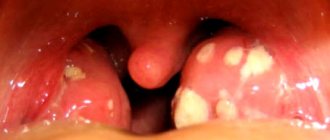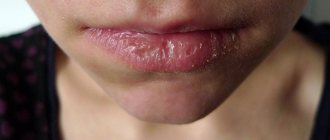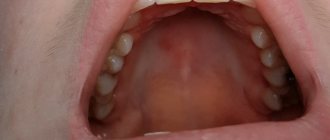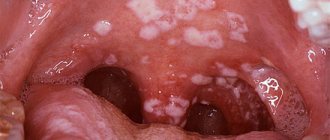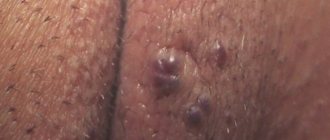Benign tumors of the pharynx, which include a cyst on the tonsil, are quite common, especially in people with chronic tonsillitis and adenoids. Such neoplasms are most often benign in nature. But, despite this, experts recommend using predominantly surgical treatment, since excessive tissue growth can at any time lead to malignancy of cells. In addition, cysts on the tonsils create obstacles to swallowing and breathing, often cause exacerbation of chronic ENT pathologies and reduce a person’s quality of life.
Tonsils are a filter for pathogenic microorganisms and perform a protective function. But with excessive tissue growth, they turn into a source of chronic infection. Cysts on the tonsils are treated mainly surgically, since conservative therapy is ineffective.
At the CONSTANTA Clinic in Yaroslavl, tonsils and cysts are removed by experienced otolaryngologists using modern endoscopic equipment. Endoscopy in otolaryngology is the gold standard of surgical treatment, which is characterized by minimal trauma and maximum efficiency. We provide our patients with qualified services and assistance from wide-ranging ENT specialists.
White dots on the tonsils: what could it be?
Most often, tonsils in white spots are a sign of an acute infectious disease, especially if there are complaints of pain in the throat and increased body temperature.
In this case, you need to consult a doctor who will help you understand the cause of the pathological changes and also prescribe treatment.
In some cases, plaque on the tonsils indicates a fungal disease, which can occur during long-term antibacterial therapy, taking hormones, and cytostatic drugs. Tonsillomycosis occurs in older people and infants.
Also, if plaque appears on the tonsils and larynx, which quickly spreads and is accompanied by intoxication, the doctor must rule out diphtheria. This disease still remains extremely dangerous, despite the immunization of the population.
Other causes of stones in the tonsils
In most cases, the cause of the formation of whitish plugs on the tonsils that have an unpleasant odor is chronic tonsillitis. But she is not the only one possible. White lumps on the tonsils can be found with the following diseases:
- Chronic sinusitis. With this disease, thick whitish or yellow mucus is produced, which accumulates in the larynx area. Clots of mucus become the culprits of the unpleasant odor from the mouth and lead to a strong cough with sputum, which may contain miniature whitish balls.
- Peritonsillar abscess that occurs against the background of advanced acute or chronic tonsillitis. The disease is characterized by the accumulation of pus in one of the tonsils. This pathological condition is accompanied by a sore throat, high body temperature and painful sensations in the neck.
- Oral candidiasis is another reason for the appearance of white balls in the throat. The disease, caused by the activation of fungi of the Candida albicans group, leads to the appearance of whitish deposits in any part of the oral cavity: on the tongue, inside the cheeks, gums, palate, tonsils.
The appearance of painless tumors in the tonsil area may indicate salivary gland cancer. Therefore, if any tumors or formations appear in this part of the oral cavity, you should consult a doctor as soon as possible.
Tonsils with white spots: causes
The tonsils are an important organ of the human immune system, which undergoes the greatest changes in childhood. It constantly “resists” bacteria, viruses and protozoa, and decreases in size with age.
In addition, the palatine tonsils are part of Pirogov’s pharyngeal ring, a protective complex that also includes the lingual, tubal and nasopharyngeal tonsils.
The reasons why white dots appear on the tonsils:
- Acute tonsillitis (tonsillitis) is an inflammatory process in the throat of viral or bacterial origin.
- Candidal stomatitis is a fungal infection of the oral mucosa.
- Herpangina is an acute infectious disease caused by viruses from the ECHO and Coxsackie group.
- Chronic tonsillitis is a long-term inflammatory process in which plugs and scars appear on the tonsils.
- Tonsillomycosis is an excessive growth of fungal flora in the folds of the tonsils.
- Infectious mononucleosis is a herpes infection that affects the tonsils, lymph nodes, liver and spleen.
Do not forget that a red throat and white dots on the tonsils can be a sign of scarlet fever or diphtheria.
What are the symptoms: how does the disease progress?
Only a detailed interview and examination of the patient can help the doctor establish the correct diagnosis.
Laboratory and, if necessary, instrumental research methods play an important role in diagnosis. When a lymphoid formation is affected, both general and disease-specific symptoms are observed.
How to treat white lumps in the throat
A small number of white dots on the tonsils indicates chronic tonsillitis. In order to avoid the occurrence of putrid odor from the mouth and the “growth” of plaques, it is necessary to undergo a set of procedures prescribed by an ENT doctor twice a year. Paying attention to your health will help you avoid serious complications.
The method of relieving the disease entirely depends on the cause of the appearance of white balls on the tonsils. For example, if we are talking about infection of the tonsils with bacteria, then the disease cannot be cured without taking antibiotics.
To determine which antibacterial medicine will be the most effective, it is necessary to undergo an analysis of the resistance of the pathogen to different groups of agents. That is why you cannot independently choose a drug for treatment, as well as determine the dosage. This should be done exclusively by an ENT doctor.
Drug therapy
Depending on the results of laboratory tests, the patient is prescribed one of the following drugs:
- Clarithromycin.
- Amoxicillin.
- Cefoperazone.
- Augmentin.
To treat an advanced disease, several drugs that have an antibacterial effect may be prescribed at once.
To effectively get rid of white lumps that appear on the tonsils due to chronic tonsillitis, it is necessary to combine antibiotics with the following drugs:
- Products with a disinfecting effect. The most popular are Chlorhexidine and Dioxidine. You can also rinse your mouth with herbal infusions (sage, chamomile).
- During the period of exacerbation of the chronic form of the disease, the doctor prescribes anti-inflammatory drugs: Panadol, Nurofen. Sometimes doctors advise taking homeopathic remedies. The most popular - Tonsilton - has no side effects and is recommended for the treatment of tonsillitis in children.
- Taking vitamin complexes. The inflammatory process affects the entire body, but the immune system is particularly damaged. To get rid of dizziness, poor health and improve the functioning of the immune system, you need to diversify your diet and take vitamins, the composition of which is replete with basic micro and macroelements, useful substances necessary for the normal functioning of all organs and systems.
Physiotherapeutic treatments
In addition to taking medications and gargling, it is recommended to undergo a course of physiotherapeutic procedures. Their type and duration are determined by the attending ENT doctor. The following types of physiotherapy are distinguished:
- ultrasonic;
- microwave therapy;
- UHF;
- laser irradiation.
Local therapy
Washing the tonsils
Quite often, experts prescribe medications for resorption (Septolete or Hexalize) and recommend taking a course of procedures for washing the lacunae of the tonsils. This manipulation is extremely difficult to do at home without experience, so it is better to take a course from a doctor.
Traditionally, the otolaryngologist prescribes 10–15 procedures; for rinsing, the specialist uses a copper-silver solution, which has a disinfecting effect.
In advanced forms of tonsillitis, even after several courses of traditional drug treatment, lumps with or without pus continue to appear on the tonsils. For some patients, the doctor may suggest removal of the tonsils. After a surgical procedure called tonsillectomy, the patient will no longer be bothered by tonsil plugs.
No temperature
Without a rise in body temperature, candidal stomatitis most often occurs. The disease is caused by the rapid proliferation of conditionally pathogenic flora in the mouth - yeast-like fungi.
They are normally present in almost every healthy person and do not cause disease. Its appearance can be provoked by acquired immunodeficiency, long-term treatment with antibiotics or hormones. At first, small white dots appear on the mucous membrane, which gradually merge with each other.
Yellowish-white deposits of a cheesy texture are formed, which can be torn off and leave behind slightly bleeding erosions (sores). The patient experiences discomfort, a sour smell, but the throat does not hurt.
Small white dots on the tonsils without fever are a sure sign of chronic tonsillitis. During exacerbations (hypothermia, ARVI), the patient complains of a sore throat, a sore feeling, and general malaise.
During the inactive period, the disease practically does not manifest itself at all. During the examination, the doctor sees large tonsils, on the surface of which there are single or multiple plugs and scars. If after a sore throat there are white dots on the tonsils, you need to be tested again and, possibly, continue the course of therapy.
Nonspecific tonsillomycosis also occurs without signs of infection. Whitish dotted plaques appear in the mouth, which cause the patient itching and discomfort while eating or talking. If the fungus continues to grow on the larynx, the back wall of the pharynx, complaints of soreness, a dry, frequent cough and a feeling of a lump in the throat may appear.
Surgeries for tonsil cysts
The smaller the size of the cyst, the easier it is to perform surgical treatment. Small neoplasms with a thin wall are usually opened and the contents are pumped out. In the future, treatment continues and consists of the use of anti-inflammatory drugs and high-quality antiseptics. If this technique turns out to be ineffective, a classic operation is performed, when a specialist removes the tumor itself or all the tonsils if they show signs of hypertrophy and do not perform their protective functions.
The extent of surgical intervention depends on the size of the tumor, the condition of the ENT organs and the general well-being of the patient. The operation can be performed either under local anesthesia or general anesthesia. As a rule, long-term hospitalization of the patient is not required. It is very important to remove the cyst completely to eliminate the risk of recurrence of the pathology in the future. If the tumor is large, actively growing and often worsens tonsillitis and other ENT diseases, then a tonsillectomy is prescribed - an operation to remove the tonsils.
In our Clinic, such surgical interventions are performed using high-quality endoscopic equipment. Often, tonsillectomy is the only correct solution for frequently recurring tonsillitis and cysts on the tonsils.
After surgery, the patient is under the supervision of specialists for some time. Doctors monitor the patient’s condition and, if problems occur, provide the necessary medical assistance. The first day after removal of cysts or tonsils, you must observe relative rest: sports, visiting baths and saunas, and public swimming pools are prohibited. These restrictions are necessary to prevent bleeding and prevent the development of infectious complications. Food should be warm and as gentle as possible. During the first weeks, you should not eat foods that can injure the oral mucosa.
In the postoperative period, specialists can prescribe medications whose actions are aimed at relieving sore throat, relieving signs of inflammation and preventing secondary infections. Local procedures for gargling and irrigating the throat with antiseptics are also prescribed. Antiseptic treatment of the wound remaining after surgery must be carried out several times a day.
You should be attentive to your well-being and if you have any complaints, contact your doctor. Surgeries to remove cysts are successful, but in any case, patients must visit an otolaryngologist for several more months so that the doctor can monitor the quality of healing of the mucous membrane and, if there is a risk of relapse of the disease, can take all necessary therapeutic measures.
If you follow all medical recommendations and avoid heavy physical activity in the first weeks after surgery, the risk of relapse of the disease and complications will be minimal. You can ask the specialists of our Clinic in Yaroslavl all your questions. We will be happy to advise you and help you even in the most difficult clinical situations. For this, doctors have everything they need: innovative technology of European quality, rich practical experience of otolaryngologists, professional knowledge.
There is an increase in temperature
Basically, fever is considered a sign of an infectious disease and precedes other symptoms. Intoxication is observed in the following throat diseases:
- Angina.
- Infectious mononucleosis.
- Diphtheria.
- Herpetic sore throat.
- Scarlet fever.
During a sore throat, body temperature rises significantly (over 38 degrees), weakness and fatigue appear. The complaint that comes to the fore is that the throat hurts when swallowing, while eating, and even at rest.
Often, nearby lymph nodes become enlarged and inflamed, causing pain in the neck area. During the examination, the doctor discovers a bright red throat and white dots on the lacunae of the tonsils, sometimes they are represented by solid white, gray or yellowish plaques.
Infectious mononucleosis is characterized by persistent fever, sore throat, and damage to the liver, lymph nodes, and spleen. During the examination, attention is drawn to sharply enlarged white tonsils against the background of the red mucous membrane of the mouth, and a neck swollen due to lymph nodes.
When palpating the abdomen, a reactively enlarged liver and spleen are felt. As you recover, all symptoms disappear. With herpetic sore throat, one white dot often appears on the arch, then the pathological process spreads.
A characteristic symptom is acute pain at rest, during swallowing. Over time, the dots on the sky are replaced by bubbles with transparent or somewhat cloudy contents, after which they burst and leave behind small erosions.
Streptococcus pyogenes is the causative agent of scarlet fever, an acute infectious exanthema that most often occurs in children. At the beginning of the disease, fever and a reaction from the lymph nodes appear, after which painful sensations in the throat and rash appear (usually appears on the 3-5th day of illness).
The rash is pinpointed, red, and covers the torso and face. Lamellar peeling on the palms is typical. At the same time, there are definitely purulent spots and redness on the tonsils.
Prevention of recurrence of tonsil cysts
After removal of the cysts, relapse of the disease may occur. To avoid this, it is necessary to prevent the occurrence of situations that provoke inflammation of the mucous membrane of the oropharynx. Try to promptly treat ENT diseases, especially tonsillitis, and avoid injury to mucous tissues. If you smoke, if possible, give up the bad habit or reduce the number of cigarettes you smoke to 1-2 per day. Tars and other substances contained in tobacco have an irritating effect on the throat and can provoke an exacerbation of sore throats.
If the patient has a history of frequent ENT diseases and relapses of tonsillitis, then the doctor may recommend removing the entire tonsil. A tonsillectomy will relieve you of chronic infection and many other health problems. But tonsil removal is carried out according to indications. You can talk about the need for total resection with the doctors of the CONSTANTA Clinic at your appointment.
If you have any questions or make an appointment with a specialist, please call: (4852) 37-00-85 Daily from 8:00 to 20:00
Sign up for a consultation
White spots on a child's tonsils
Children quite often suffer from acute respiratory viral infections and tonsillitis. Such a high incidence is due to the fact that they have immature immunity and children almost always come into contact with sick people in preschool and school institutions.
A common ARVI can be easily treated symptomatically at home, but if white spots are found on the child’s tonsils, you should consult a pediatrician.
When an infant is infected with tonsillitis, the following symptoms may occur:
- anxiety, poor sleep;
- unmotivated crying, refusal to eat;
- fever, increased drowsiness.
Upon examination, white dots on the child’s tonsils, bright redness of the mucous membrane, and a coated tongue will be clearly visible.
Herpetic sore throat is typical for children of preschool and school age, less often, but the disease occurs in adolescents and adults.
Initially, a high fever appears, loose stools and vomiting are possible. Later, the child begins to complain of a sharp sore throat and weakness. When examining the oral cavity, a sore throat with white dots is revealed.
It is important to consult a doctor in time to carry out all the necessary examinations and begin treatment. Parents should understand that children tolerate intoxication much worse, and the lack of proper therapy can lead to complications.
What complications can occur if left untreated?
The presence of a chronic source of infection in the body can lead to the spread of pathogenic microorganisms and damage to other organs. Most often they suffer from this:
- kidneys;
- joints;
- heart.
If an abscess is present or an open wound is formed when trying to remove the plugs mechanically, microbes are able to penetrate the bloodstream. This is fraught with the development of sepsis - blood poisoning, which in half of all cases leads to the death of the patient, even with timely seeking medical help.
The lack of treatment for diphtheria and untimely administration of anti-diphtheria serum is fraught with the development of severe damage to the nervous system and death of the patient.
When to see a doctor? What kind of specialist is needed?
If you experience high fever, chills, pain or sore throat, it is recommended to visit the hospital at any age. Many diseases have similar symptoms, which only a specialist can deal with.
Treatment of throat diseases is carried out by local pediatricians or general practitioners, infectious disease doctors and otorhinolaryngologists. Sometimes patients need consultation from dentists and surgeons.
Diagnosis of causes
To find out the cause of the disease, the doctor may prescribe the following examinations:
- clinical blood test (helps determine the presence of inflammation and its nature: viral or bacterial);
- biochemical examination of blood serum is most often used in the diagnosis of infectious mononucleosis, in which a transient increase in liver enzymes is possible;
- bacteriological examination of swabs from the nose and throat for pathological microflora, sensitivity to antibiotics (this is an important study, the results of which help determine the pathogen and the choice of medications);
- bacteriological analysis of nasopharyngeal swabs; inoculating smears on fungal-sensitive media;
- determining the amount and type of antibodies in the patient’s blood to a particular infection.
In order to ensure the effectiveness of the treatment, the doctor may prescribe a follow-up examination of the patient.
How dangerous is this?
Often papillomas on the tonsils are benign in nature, but at any age it is not worth the risk, and it is better to initially seek professional advice to eliminate all risks. Medical specialists identify the following among the main factors provoking the appearance of education:
- heredity;
- violation of metabolic processes;
- frequent colds and their complex course.
What color are the formations?
Papillomas blend in with the color of the mucous membrane of the throat, but sometimes they can change their pigmentation, becoming light pink or dark brown. Initially, one formation may appear, which is similar in size to a pea or the head of a pin. Over time, the number of formations can increase significantly and the lesion will look like a cauliflower with multiple papillomas. Sometimes the appearance process can be accompanied by inflammation.
Treatment in a medical facility
As a rule, patients with severe sore throat, infectious mononucleosis, suspected diphtheria and purulent-septic complications are subject to hospitalization. Also, inpatient treatment is necessarily indicated for children under one year of age or those living in unfavorable social and living conditions.
In the treatment of bacterial tonsillitis the following is used:
- Broad-spectrum antibacterial agents (penicillins, protected penicillins, cephalosporins and macrolides). This may be Flemoxime, Augmentin, Cefuroxime axetil, Azithromycin or Clarithromycin.
- Antiseptics for the throat in the form of gargling solutions, lozenges, tablets or sprays (Gevalex, Tantum-Verde, Lisobakt, Grammidin).
- Children are prescribed rinses with furacilin and soda solution. The use of sprays is not recommended.
- Antihistamines to suppress autoimmune inflammation (Suprastin, Loratadine, Cetirizine).
In severe cases of the disease, infusion therapy (glucose, saline solutions), intravenous immunoglobulins, and antipyretics are prescribed.
In the case of tonsillomycosis in an adult, systemic antifungal drugs are used in the form of tablets or solutions for intravenous administration. Rinsing with antimycotics and antiseptics is mandatory.
During pregnancy, it is extremely difficult to choose a drug that is safe for the unborn child. Of the antibiotics, the penicillin group is most often prescribed; rinsing is not contraindicated. [ads-pc-1][ads-mob-1] In the treatment of uncomplicated infectious mononucleosis, Dr. Komarovsky recommends adherence to symptomatic therapy. Since this is a viral infection, antibacterial drugs are not always indicated. It is necessary to carefully sanitize the oral cavity, regulate body temperature and follow the regimen prescribed by the doctor.
On the topic: Ulcers in the throat: causes and treatment. What to do? Which doctor treats you?
What are white lumps in the throat? Causes. Treatment methods
After the tonsils are cleared of plaque, physiotherapeutic treatment is possible. The most effective is tube-quartz - local ultraviolet irradiation, which has bactericidal properties.
Treatment
The nature of the therapy is selected based on what caused the small white dots in the throat.
Therefore, the doctor may prescribe: Local and systemic antibiotics. Bioparox, Polydexa, Isofra or Rinil sprays are indicated for mild forms of bacterial infection. In more severe cases, it is impossible to manage without the use of systemic drugs. These include Ospamox, Augmentin, Flemoxin Solutab, Sumamed, Hemomycin, etc.
Antiseptic solutions (Chlorophyllipt alcohol, Rotokan, Miramistin, Givalex, Angilex, Furacilin). These medications are designed to destroy pathogenic microorganisms on the surface of the mucous membranes for any type of infection.
Antifungal drugs (Futsis, Mikomax, Mikosist, Ketoconazole, Pimafucin, Nystatin, Clotrimazole, etc.) are used for the treatment of candidiasis and against the background of antibiotic therapy.
Antihistamines (Claritin, Loratadine, Suprastin, Erius) are necessary to eliminate swelling and prevent an allergic reaction to other medications taken.
Antiviral drugs (Immunal, Kagocel, Lavomax, Isoprinosine, Proteflazid, Imudon) are prescribed to increase the immune response and speed up the onset of recovery.
For each patient, the list of necessary medications is selected individually. It is extremely important that a specialist examine a throat with white spots and select the optimal therapy.
Self-medication can lead to a significant deterioration of the condition and the development of complications. And in case of diphtheria, delay in administering a special anti-diphtheria serum, which destroys the toxins released by pathogens, is fraught with severe complications, even death.
Physiotherapy
But with chronic tonsillitis, just using medications is not enough. In such cases, it is additionally indicated to undergo physical therapy and necessarily wash the tonsils in an ENT office.
- White lumps in the throat on the tonsils and tonsils: what is it and how to treat it
This procedure is considered the most effective for clearing traffic jams. Its essence is to wash away formations from the lacunae of the tonsils with the pressure of an antiseptic solution.
Patients may also be prescribed:
- UHF;
- ultrasound therapy;
- ultraviolet irradiation;
- electrophoresis.
All these methods increase the effectiveness of drug therapy. They are prescribed in courses of 10–12 procedures.
How to treat at home?
Many people are interested in the question of how to quickly get rid of plaque on the tonsils at home. As mentioned earlier, a medical consultation is mandatory, but treatment at home is quite possible.
For this purpose, they also use antibiotics, antifungal drugs in tablets, and for young children - in suspensions to prepare a solution.
How to relieve pain:
Local bactericidal and antiseptic agents in the form of lozenges, tablets, and sprays are highly effective. The most popular of them: Lizak, Lisobakt, Septefril, Strepsils, Doctor Mom, Grammidin, Decathylene, Chlorophyllipt, Ingalipt.
The basis of therapy for tonsillitis is rinsing:
- Saline solution. Prepared by adding a quarter teaspoon of regular soda to 250 ml. The water should be at room temperature.
- Furacilin. You need to dissolve 2 tablets of the medicine in a glass of clean and warm water, gargle 4-5 times a day.
- Chamomile. This is a good anti-inflammatory and bactericidal agent. To prepare a decoction, you can use 2 bags of dry chamomile, which are available in pharmacies.
- Metrogilome. The drug is sold as a solution for intravenous administration, but it can be used as a gargle for sore throats of mixed origin and candidiasis. Before use, the medicine is diluted 1:1 with saline or clean water.
In some cases, inhalations with antiseptic solutions are allowed. What is not recommended to do: heat the site of the disease, remove plaque mechanically during the acute period of the disease, perform steam inhalations.
More materials: How to gargle correctly? Solutions. For children and adults
Inflammation of the throat and larynx: treatment. What to do in case of inflammation?
How does the tumor feel?
Sometimes the patient does not feel any changes at all due to its small size, since there are no nerve endings in the papilloma, but as the formation grows, symptoms such as awkwardness when swallowing, a feeling of a foreign body in the throat, and cough appear. Similar sensations occur during pharyngitis or laryngitis, and in order to exclude the appearance of formations, it is necessary to urgently make an appointment with a doctor. With a child, the situation is complicated by the fact that he cannot accurately describe his sensations, and it is also difficult for him to carefully examine the oral cavity and pharynx on his own.
Diagnosis, treatment and prevention of recurrence of papillomas is carried out only by a medical specialist under the careful supervision of all stages and the obligatory condition of checking the oncogenic nature.
How is tonsil mass treated?
Traditionally, in the fight against otitis media or exacerbation of chronic tonsillitis, antibiotics and concomitant therapy are prescribed to minimize the negative impact on the gastrointestinal tract. If formations on the tonsils are confirmed and their nature is clarified, treatment is prescribed by a specialist. It is forbidden to rip off or burn papillomas yourself.
An experienced otolaryngologist, as well as with the necessary consultation of a professional surgeon, prescribe the most effective treatment methods, including:
- removal of tumors with laser;
- radio wave excision;
- freezing and removing formations using cold;
- electrocoagulation, when the papilloma is removed using current.
The method is selected taking into account:
- degree of damage;
- age;
- general condition of the body;
- individual reactions.
The papilloma virus cannot be cured, but everything can be done to block its manifestation.
Make an appointment with a surgeon
Choose a doctor
White spots in the throat - the reasons for their appearance
The appearance of white dots in the throat on the tonsils indicates the formation of plugs that impair breathing and cause putrid odor from the mouth.
This is explained by the fact that these are precisely the foci that contain a large concentration of microbes.
For the body, these are toxins, the waste products of which negatively affect the structure of the mucous membrane and the general well-being of the patient.
Without drug therapy, positive dynamics are completely absent; moreover, they provoke serious complications and contribute to the development of chronic diagnoses with systematic attacks.
This happens with sore throat, pharyngitis, tonsillitis. With delayed treatment, ulcers form on the laryngeal mucosa followed by scarring.

